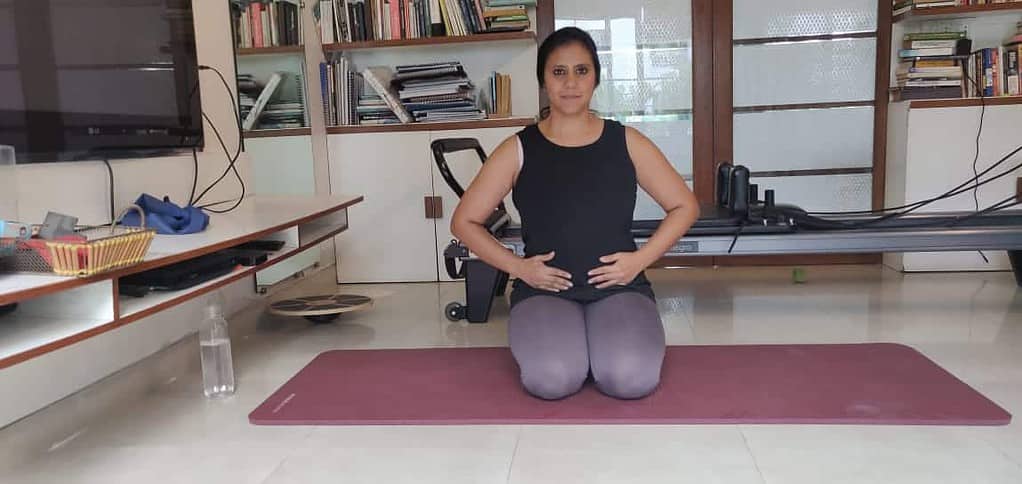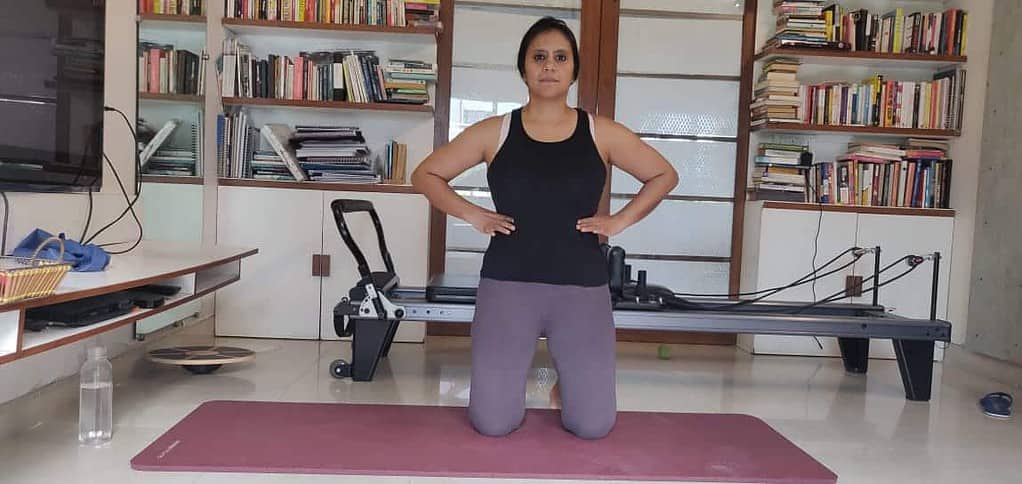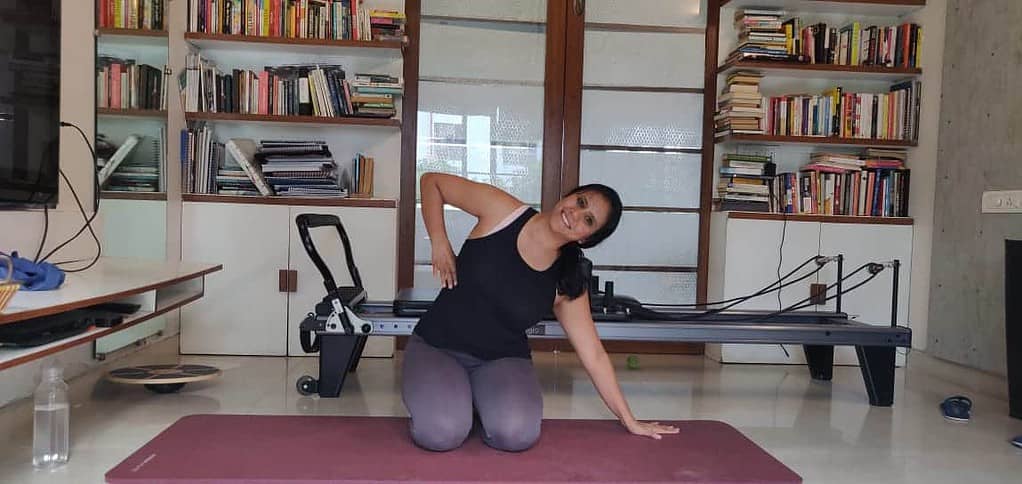The Inner Core Muscles: Diaphragm

The first and last act of life is breathing. It is the sign of being alive. And that makes the diaphragm, which is the primary muscle used for respiration, the Supreme muscle of the body. Ok, scratch that. Let’s not be this dramatic. Of course, breathing is one of the most important functions of the body. And the diaphragm is one of the most utilised muscles. But we are not looking at the role of the diaphragm in breathing. Instead, we shall explore the role of breathing in working the inner core unit, of which the diaphragm is the roof.
The Core
As you would recall from our previous blogs on the transversus abdominis and the multifidi, the Core is the powerhouse of our body. It comprises of the diaphragm on the top, the pelvic floor on the bottom, the transversus abdominis in the front, and the multifidi and deep spinal muscles at the back. These are connected through the thoraco-lumbar fascia (a three-layered connective tissue sheet present from the mid to lower back) which pulls the reign of the spine.
Diaphragm or The Superior
A dome-shaped, membranous muscle, the diaphragm sits right below the heart and the lungs, and it separates the torso into the thoracic and abdominal cavities.
Anatomy
The diaphragm is a dome-shaped muscle with multiple attachments. The fibres give slips all the way down to the 2nd/3rd lumbar vertebrae, fan around the rib cage and intercostal spaces and finally converge up into the central tendon close to the level of the 5th rib.
There are three large openings in the diaphragm that allow certain structures to pass between the chest and the abdomen. These are:
- the oesophageal opening for the oesophagus and the vagus nerve, which control the digestive system,
- the aortic opening for the main artery that transports blood from the heart and the thoracic duct of the lymphatic system, and
- the caval opening for the inferior vena cava, the vein that transports blood to the heart.
Function
The diaphragm is the main muscle of respiration. Sitting like an open umbrella at rest, it contracts to flatten out horizontally. This result is an increase in the internal height of the thoracic cavity, thus lowering its pressure and causing inspiration of air. When the diaphragm relaxes, it returns to its resting position reducing the volume of the thoracic cavity, thus increasing the pressure. The elasticity of the lungs and the increased pressure results in exhalation.
It is assisted by external intercostal in inspiration and few other accessory muscles viz. the internal and external intercostals, serratus posterior, inferior and superior, the scalenes and the upper trapezius to push the extra air in or out.
Apart from respiration, the diaphragm is also important in expulsive actions like coughing and sneezing, crying. It increases abdominal pressure to aid the expulsion of vomit, faeces, urine and, in parturition, the foetus. It also places pressure on the oesophagus to prevent acid reflux.
Additionally, the movement of the diaphragm affects the heart. The fibrous pericardium of the heart is attached to the diaphragm’s central tendon by ligaments, and the heart literally rides up and down as you breathe.
As the roof of the core, the diaphragm’s plunger-like function can reduce and increase pressure in the abdominal cavity as well, aiding in activating the core in preparation of movement. The movement of the diaphragm is mirrored by the pelvic floor, which forms the base of the cylinder that is the core. The activation of the 4 aspects of the core simultaneously stabilises and protects the spine.
Breathing, and thus the movement of the diaphragm, then aids certain movements by altering the pressure of the other muscles, while maintaining a neutral spine. Extension of the spine is aided by inhalation and flexion is aided by exhalation. Lateral flexion and rotation can be aided by either inhalation or exhalation.
How to feel the diaphragm in action
Involuntarily, the diaphragm is working non-stop. The best way to feel the movement is to observe the change in intra-abdominal pressure caused by inhalation and exhalation. Place a palm on your belly button. As you inhale, feel the belly expand and as you exhale, feel the belly move away from your t-shirt. This change in abdominal volume and pressure is due to the movement of the diaphragm.
Dysfunction
Various things like trauma, surgery, inflammatory illnesses, nerve damage etc. can affect the functioning of the diaphragm. However, we are concentrating on the physical dysfunction caused by weakness or tightness of certain muscles, altering posture and breathing patterns.
Studies suggest that if healthy breathing patterns are not in place, then no other movement pattern can be. And this is because of the diaphragm is a centrally located muscle. It is inextricably linked to various muscles and organs by various neuromuscular and myofascial connections.
A wrong posture or conditions like thoracic kyphosis, lumbar lordosis, scoliosis or weakness in muscles of the chest and back, can alter the capacity of the diaphragm to contract and relax. Everyday posture affects the habitual use of breathing muscles. The reverse is also true whereby breathing influences muscular function and posture. The respiratory movement of the diaphragm is synchronised with its stabilization function. Dysfunction of this synchronisation leads to overloading of spinal segments and an altered posture, leading to pain.
Although breathing is regulated and coordinated by the autonomic nervous system, proper breathing patterns can be facilitated consciously. Physical, chemical and emotional factors can alter the rate and volume of the breath. The body compensates for these factors by involving accessory muscles or by quickening the rate of the breath. This a completely adaptive response if an athlete is running or in a “fight-or-flight” situation. It is only a problem if this quick and shallow breathing pattern is observed at rest or even when the initial trigger no longer exists.
This kind of breathing pattern leads to tightness in the neck and shoulders and even the hip flexors. The psoas is a hip flexor muscle connected to the diaphragm via its fascial connections. With each breath, psoas and diaphragm work together to provide anterior spinal stability. The diaphragm and hence the psoas, react to fear and to stress with constriction. When in “fight or flight” mode breath is short and sharp, and it shortens the psoas and it is not good in the long run. A short and tight psoas can lead to low back pain, sacroiliac pain, sciatica and a host of other issues.
Breathing Exercises to retrain the diaphragm
It will probably never be clear which came first, the breathing pattern problem or the posture problem. Regardless, both need to be addressed to optimise core stability and overall performance. Retraining the diaphragm with Pilates breathing exercises is the first step though.
Diaphragmatic Breathing
Place your palms on your abdomen and feel them rise as you inhale. Breathe into the abdomen while imagining that you are filling the torso up from the bottom of the pelvis with air. On the exhale, feel your abdomen draw in towards the spine as the lungs empty out and the diaphragm returns to its relaxed position.

Lateral Breathing
Place your palms around the lower ribs. Imagine the air filling into the sides, pushing your ribs out and your palms away as you inhale. Picture the dome of the diaphragm opening out and the ribs expanding like an umbrella. And as you exhale, feel your ribs coming close together towards the spine in the centre.

One Lung Breathing
Bend the torso to one side and place your hand on the same side down on the mat and the top hand on the lower ribs of the same side. Now breath into the lung which is on top and feel it expanding into your palm.

Breathing into the back of the rib cage
Come into an all fours position and wrap a theraband around your back below the shoulder blades, while holding them firmly in your hands. Now breathe into the stretched out theraband and exhale to relax. It will help you breathe into the back of your lungs.

Breathing exercises help align the body and mind. Concentrating on the breath really helps relax. The de-stressing effect of breathing exercises is well known. It makes you aware of every sensation in your body and makes you calm. Once your breathing technique is correct, not only will you be more relaxed, but your diaphragm will also work at its optimum, letting you experience better results from your Pilates workouts and ease in daily functions too.
Check out our schedule of online classes to practice Pilates and retrain your breathing!
